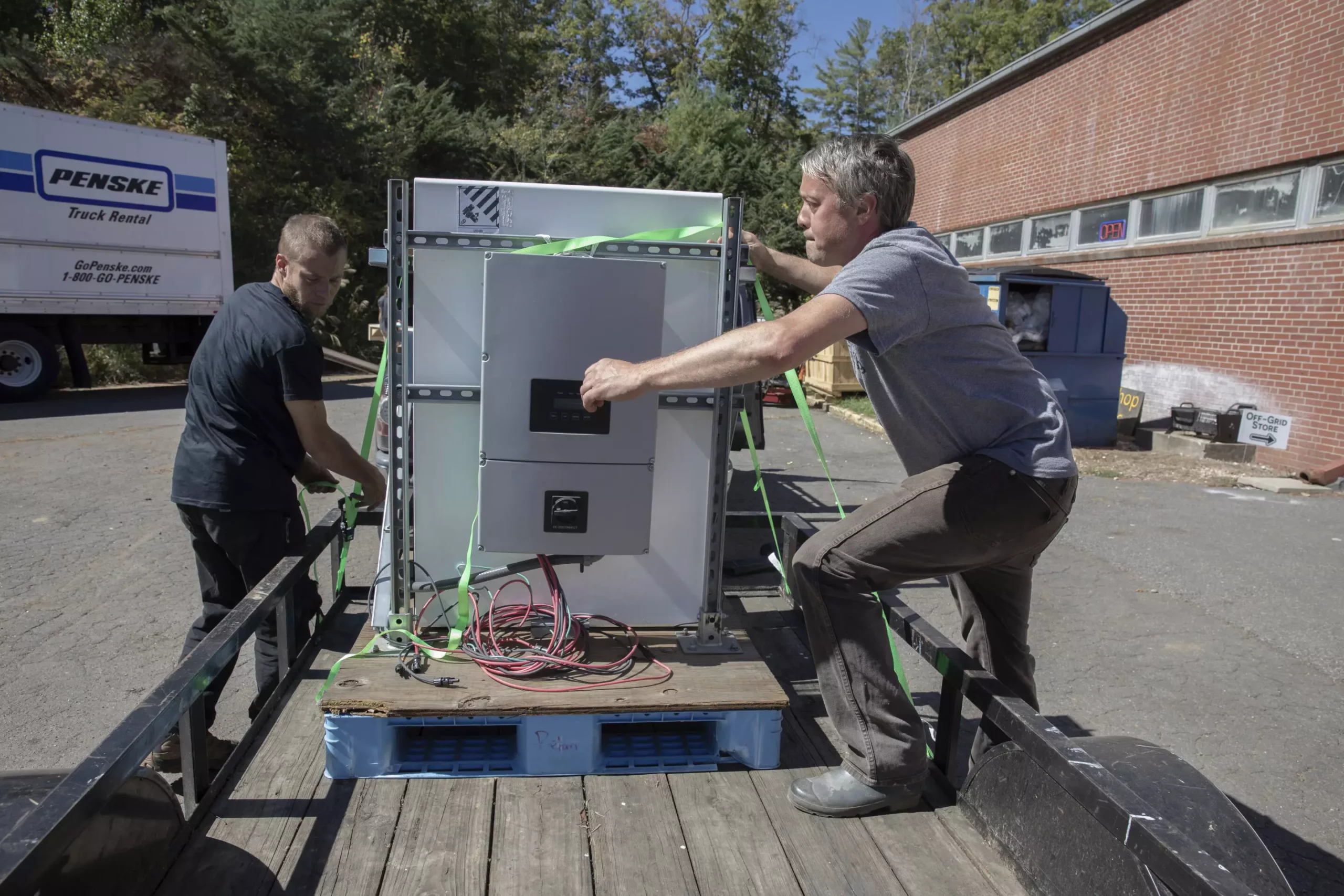In the wake of Hurricane Helene’s disastrous impact on the mountainous regions of North Carolina, the community of Tipton Hill has come together in an impressive display of resilience. Led by Bobby Renfro, a retired railroad worker, neighbors have rallied to support one another in the face of overwhelming challenges. Renfro established a community resource hub in a converted church, providing essential services to locals displaced by the storm. However, a continuous hum of a gas-powered generator serves as a constant reminder of the precariousness of their situation. For Renfro, the generator, purchased at a staggering cost of $1,200, is not merely a luxury—it is a lifeline, keeping medicines stable and medical equipment functional for many residents grappling with health issues.
With over 43,000 customers still without power weeks after the hurricane, the urgency of their circumstances cannot be understated. The loss of electricity has significant ramifications, as the lack of refrigeration can endanger critical medications, while the absence of power restricts access to essential resources. The unique geographical challenges posed by the dense forests complicate repair efforts, as restoration crews navigate roads and bridges rendered impassable. The reality on the ground is grim; many families have been pushed beyond their limits, relying on expensive fuel deliveries to keep their emergency power sources operational.
Despite the coordinated efforts from a multitude of utility companies and volunteers, the rebuilding process is painstakingly slow. Kristie Aldridge from North Carolina Electric Cooperatives emphasized the scale of the challenge, noting that crews are not simply restoring existing infrastructure but are tasked with reconstructing from scratch—an effort that takes time, patience, and significant resources. Auxiliary energy solutions, namely gas and diesel generators, provide limited relief. While they help bridge the gap temporarily, they bring their own complications, including exorbitant fuel costs and harmful emissions that can jeopardize public health.
Frustration among residents like Renfro is palpable. He fears that the plight of those in remote areas, who feel cut off from essential support, is often misunderstood by outsiders. This disconnect amplifies an already dire sense of desperation, leaving many to grapple with inadequate resources and a lack of immediate relief options. Continuous efforts from volunteers remain paramount for these communities, as local leaders seek innovative solutions to restore some semblance of normalcy.
Encouragingly, there is a glimmer of hope on the horizon. Thanks to the outreach of the nonprofit Footprint Project and local solar installation partners, Renfro’s community received a solar generator this week. This new system, equipped with six solar panels, offers a quieter, cleaner alternative to the gas generator that has been their lifeline for weeks. With free operational costs and sustainable energy sources, solar technology is a beacon of potential for communities eager to regain autonomy over their energy needs.
Footprint Project, founded by Will Heegaard, is motivated by the urgency of addressing climate change and natural disaster responses through innovative, sustainable practices. Their deployment of solar microgrids and generators is more than just a temporary fix; it represents a strategic shift towards embracing renewable energy solutions, which could have lasting impacts.
With the ability to harness clean energy, community members are poised for improved stability. Local leaders like Renfro view this new power source as a means to help residents regain hope amid the chaos. The scope of Footprint Project’s initiative doesn’t stop at solar technology; they are also developing resources that pull water from the air and providing numerous portable batteries to meet urgent needs.
The collaborative efforts within the community cannot be understated, as local volunteers tirelessly work to deliver essential supplies and equipment for those in need. Among these volunteers are glassblowers from Asheville, who have transformed their skills into community service by delivering critical supplies. Each delivery becomes a lifeline to families who are still attempting to dig out from the wreckage. The model of mutual support reinforces the notion that hope lies in collective action and sustained engagement.
Additionally, organizations are taking unprecedented steps to reach isolated communities. As terrain challenges emerge, unconventional methods are being explored to deliver resources. The possibility of using mules or helicopters to transport essential supplies showcases the extent of commitment from both volunteers and organizations to reach those hardest hit.
While efforts to restore electrical infrastructure continue, challenges remain for those whose homes are too damaged for immediate reconnection. For Footprint Project and other non-profits, the commitment extends beyond just restoring power. Acknowledging the long-term recovery needed for many families, these organizations are dedicated to remaining in impacted areas for as long as help is needed.
As the community in Tipton Hill and throughout North Carolina grapples with the aftermath of Hurricane Helene, it becomes evident that rebuilding is not solely about reconstructing infrastructure; it’s about rekindling hope. By embracing renewable resources, fostering community support, and committing to long-term recovery efforts, the residents of Tipton Hill are not only surviving—they are paving the way for a brighter, more sustainable future.


Leave a Reply